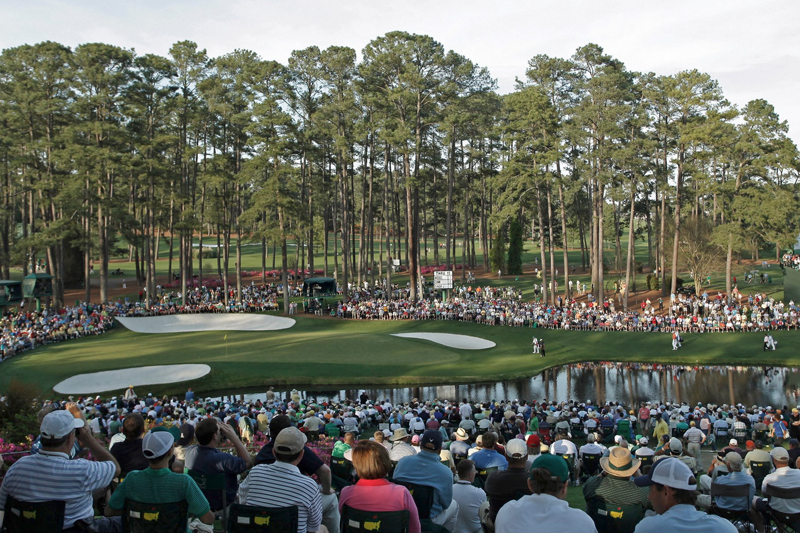Looking back to the 2017 Masters when Sergio Garcia won his first major this past April, I wondered how much money he actually won for "four days of work"? What you may not know is that any winner's total share of the purse is banned by The Master's committee from being announced on TV during the event. (Just for the record, Garcia's share was $ 1,980,000 and that helped him have a big smile in Rae's Cabin, when he slipped into his first green jacket.) They also do not announce the attendance or total gate receipt for the week-long event that includes a past champions' dinner on Tuesday night and a nine-hole par-three event on Wednesday.
As for Horton "Who," I will get to him in a few paragraphs and that will give him more importance at the end of his eighteen holes of glory. So let's start at the beginning, after Bobby Jones retired (and some would argue, as the best golfer in the world at age 28), he and a group of rich golfing friends decided to buy 365 acres outside Augusta, Georgia and build their dream golf course.
The intent in 1931 was to create an exclusive golf club for "high-class" members by invitation only. Those members would include VIPs, lawyers, politicians, company CEOs; basically the upper crust of male society, working or retired, but no women.
Built on the grounds of a plant nursery dating back to the 1850s, the grounds already had a head start on flowers, azaleas and magnolia trees. When it opened in 1933, it had the feel of an established golf course built long ago and "looked like a museum replica of plantation days in the Old South."
Since money was no object, Jones and his cronies hired Dr. Alister Mackenzie, world-renowned English golf course architect to work his magic on the course. And to this day the landscaping at Augusta has become an art form. It was good news/bad news for Mackenzie though. He had created a masterpiece for generations of golfers to enjoy, but he died before he could witness the first Masters Tournament in 1934.
The Masters tournament began almost by accident - or better yet, fate, due to the fact that Jones and his buddies wanted to host a major tournament. They wanted the U.S. Open to be played in Augusta in 1933, but the deal fell through. Over the course of the next year, he used his celebrity to convince the game's greatest players to be part of the Augusta National Invitational Tournament (the name Masters did not start until 1939). So, now you might be curious about who won the first tournament held at Augusta, no matter what it was called. Well it turns out that a pro golfer (unknown to many modern fans today) named Horton Smith was the first to claim the title. He did not receive a green jacket (more on that in a moment), but did receive a prize purse of $1,500, shooting one under par for the tournament. Smith was no hacker, but had a great career in golf during his lifetime. He finished with 32 PGA wins; won a second Masters in 1936 and was inducted into the Golf Hall of Fame in 1990.
Why no green jacket for Smith? Simple. In 1937, members of Augusta started wearing green jackets to distinguish themselves from the common fans, but it wasn't until 1949 when Sam Snead won his first Masters that the jacket become an add-on to the prize money of $2,700. Some will argue that the "Green Jacket" means more to the winner than the prize money.
If you want to attend the Masters next year as a patron (the term fan is not allowed to be used on TV as stated by the Masters committee), you better bring your checkbook. A four-day ticket to be in the gallery was going for $9,775 on stub hub this past April.
19th Hole trivia
Masters facts:
- Jack Nicklaus holds the record for the most wins at 6.
- Rae's Creek is dyed blue every April for the Masters and TV viewers.
- During WWII, play was suspended and the course was used to graze cattle.
- Augusta currently has accepted two women members.
- Justin Rose finished second in the 2017 Masters with a paycheck of $1.4 million.
- Horton Smith graduated from Southwest Missouri State. During his career he played on five Ryder Cup teams.





















































